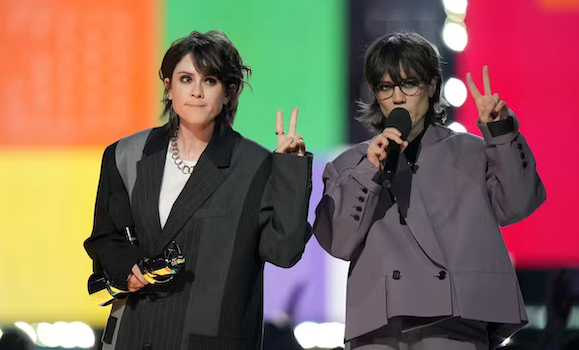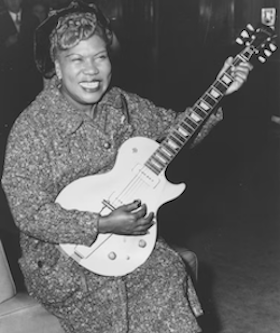, Professor of Musicology, 
What a thrill, for a feminist scholar of popular music, to see Toronto band The Beaches close out Canada’s 2024 Juno awards! They had just won . The only other all-female group ever to have won the coveted Group of the Year was Tegan and Sara, .
Rock Album of the Year has gone to all-male bands . The Beaches themselves won it in 2022, JJ Wilde won the previous year, and Alanis Morissette won in 1995.
Can it be that a girl takeover of rock culture is actually upon us?

Tegan and Sara accept the humanitarian award at the Juno awards, in honour of their work supporting the 2SLGBTQ+ community, in Halifax, March 24, 2024. THE CANADIAN PRESS/Darren Calabrese
Rock’s origins, shifting forms
Rock (nowadays often called ‚Äúclassic rock‚ÄĚ) solidified as a style in the mid-1960s, alongside the emergence of . It drew on the youthful energy and sounds of rock ‚Äôn‚Äô roll to attempt more serious artistic expression.
Rock has been the dominant style of mainstream popular music for my whole life. It is notoriously centred around , to the of . So totalizing is this view that fans sometimes have to be reminded of in .
The for a rock band is a quartet of , with vocals either by , or assigned to a .
The classic four-piece band is an efficient unit that can produce a rich sound, and it is an easy fit for a group of friends.
The logistics of band life, from co-writing songs to sharing hotel rooms on tour, have been simpler for men of similar background.
Black women pioneer guitarists

The more this all-male version of rock band was seen, the more fans and musicians came to accept it as the right ‚ÄĒ or only ‚ÄĒ version.
No real surprise, then, that rock culture became male dominated, and that the music became part of the performance of manhood.
In the late 20th century, the electric guitar so central to rock actually became of masculinity, even though many were .
In its most sexist moments, rock culture has treated with , both as listeners and as artists.
Above: Sister Rosetta Tharpe, guitar-playing American gospel singer, gives an inpromptu performance in a lounge at London Airport, following her arrival from New York, in 1957. (AP Photo, File)
Female aficionados, tastemakers
In rock culture of the 1960s and 70s, girls and women tended to be limited to the roles of fans or girlfriends. Some female fans were given a special name, ‚Äúgroupie,‚ÄĚ that reduced them to their sex appeal and sexual appetites. The fact that were passionate aficionados and tastemakers of rock was obscured.
To participate in rock as a musician in a band has been even more difficult. Solo artists like Janis Joplin or Alanis Morissette have achieved great success as rock singer/songwriters, of course. But the story of the founder of legendary punk bands the Slits and the Raincoats, , is revealing.
As a Spanish teenager on her own in London‚Äôs developing punk scene, she happily joined a band and agreed to play drums (the only role still available). When the band‚Äôs leader made a pass, she rejected him ‚ÄĒ and then found .
This experience , where she wouldn’t be subject to male egos and unwanted sexual advances. Indeed, few rock bands of the 1970s included women and men working together, and some famous examples offer of how mixed gender bands can implode.
Riot grrrl movement
Girls and women growing up in the rock era could turn to other mainstream genres, like pop, to find music that spoke to and for them, of course. But in 1980s and 90s’ hierarchies of taste, some of this female-led pop music was often derided as . Even an icon like Madonna was once dismissed as a pretty that serious music critics shouldn’t waste time on.
So when a group of women at their local punk scene in the 90s, they carefully planned shows that excluded media and brought . That group included , a pioneer in the deliberately underground riot grrrl movement.
The riot grrrl movement built space for female musicians to experiment and build a sound, without the pressure of being held to mainstream standards. Their legacy is seen in and the creation of .
Rushed the stage
The Beaches, with their classic four-piece lineup, cheeky rock swagger, are both a breath of fresh air and also heirs to a long, proud tradition. Girls and women have rushed the stage and claimed their spot at the centre of rock culture, and fan response shows that the music scene is all the better for it.![]()
This article is republished from  under a Creative Commons license. Read the .

